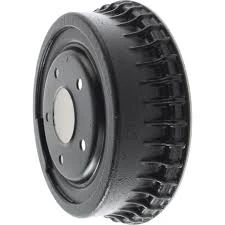
-
 Afrikaans
Afrikaans -
 Albanian
Albanian -
 Amharic
Amharic -
 Arabic
Arabic -
 Armenian
Armenian -
 Azerbaijani
Azerbaijani -
 Basque
Basque -
 Belarusian
Belarusian -
 Bengali
Bengali -
 Bosnian
Bosnian -
 Bulgarian
Bulgarian -
 Catalan
Catalan -
 Cebuano
Cebuano -
 Corsican
Corsican -
 Croatian
Croatian -
 Czech
Czech -
 Danish
Danish -
 Dutch
Dutch -
 English
English -
 Esperanto
Esperanto -
 Estonian
Estonian -
 Finnish
Finnish -
 French
French -
 Frisian
Frisian -
 Galician
Galician -
 Georgian
Georgian -
 German
German -
 Greek
Greek -
 Gujarati
Gujarati -
 Haitian Creole
Haitian Creole -
 hausa
hausa -
 hawaiian
hawaiian -
 Hebrew
Hebrew -
 Hindi
Hindi -
 Miao
Miao -
 Hungarian
Hungarian -
 Icelandic
Icelandic -
 igbo
igbo -
 Indonesian
Indonesian -
 irish
irish -
 Italian
Italian -
 Japanese
Japanese -
 Javanese
Javanese -
 Kannada
Kannada -
 kazakh
kazakh -
 Khmer
Khmer -
 Rwandese
Rwandese -
 Korean
Korean -
 Kurdish
Kurdish -
 Kyrgyz
Kyrgyz -
 Lao
Lao -
 Latin
Latin -
 Latvian
Latvian -
 Lithuanian
Lithuanian -
 Luxembourgish
Luxembourgish -
 Macedonian
Macedonian -
 Malgashi
Malgashi -
 Malay
Malay -
 Malayalam
Malayalam -
 Maltese
Maltese -
 Maori
Maori -
 Marathi
Marathi -
 Mongolian
Mongolian -
 Myanmar
Myanmar -
 Nepali
Nepali -
 Norwegian
Norwegian -
 Norwegian
Norwegian -
 Occitan
Occitan -
 Pashto
Pashto -
 Persian
Persian -
 Polish
Polish -
 Portuguese
Portuguese -
 Punjabi
Punjabi -
 Romanian
Romanian -
 Russian
Russian -
 Samoan
Samoan -
 Scottish Gaelic
Scottish Gaelic -
 Serbian
Serbian -
 Sesotho
Sesotho -
 Shona
Shona -
 Sindhi
Sindhi -
 Sinhala
Sinhala -
 Slovak
Slovak -
 Slovenian
Slovenian -
 Somali
Somali -
 Spanish
Spanish -
 Sundanese
Sundanese -
 Swahili
Swahili -
 Swedish
Swedish -
 Tagalog
Tagalog -
 Tajik
Tajik -
 Tamil
Tamil -
 Tatar
Tatar -
 Telugu
Telugu -
 Thai
Thai -
 Turkish
Turkish -
 Turkmen
Turkmen -
 Ukrainian
Ukrainian -
 Urdu
Urdu -
 Uighur
Uighur -
 Uzbek
Uzbek -
 Vietnamese
Vietnamese -
 Welsh
Welsh -
 Bantu
Bantu -
 Yiddish
Yiddish -
 Yoruba
Yoruba -
 Zulu
Zulu
brake drum thickness
Understanding Brake Drum Thickness A Crucial Aspect of Vehicle Safety
When it comes to vehicle safety, the braking system plays a pivotal role, and the brake drum is a significant component within that system. Brake drums are typically found in older vehicles and some light trucks, serving as the surface against which brake shoes press to slow down or stop the vehicle. One critical aspect of brake drums that often goes unnoticed by drivers is the thickness of the brake drum. This article explores why brake drum thickness matters, how it affects performance, and when it should be checked or replaced.
Importance of Brake Drum Thickness
Brake drum thickness is vital because it directly influences the braking performance of a vehicle. As the brake shoes press against the inside surface of the drum, they generate friction, thereby slowing down the vehicle. Over time, due to wear and tear, the thickness of the brake drum can decrease. This reduction in thickness can lead to several issues, including reduced braking efficiency, increased stopping distances, and potentially dangerous brake fade.
Moreover, brake drums that are too thin may not be able to withstand the heat generated during brake operation. Brake systems generate a significant amount of heat due to friction, and if the brake drum cannot dissipate this heat effectively, it can lead to warping or cracking. Such damage compromises the integrity of the brake system and poses a severe safety risk.
Recognizing When to Check Brake Drum Thickness
brake drum thickness

Regular maintenance is essential for every vehicle, and part of that maintenance should include checking the thickness of the brake drums. Manufacturers often provide specifications for the minimum allowable thickness of brake drums, which is usually etched right on the drum itself. As a general rule, if the drum's thickness is reduced to this minimum level, it should be replaced immediately.
Drivers should also be vigilant about unusual sounds or changes in braking behavior. Common signs that the brake drum may need to be replaced include
1. Squealing or Grinding Noises If you hear any unusual noises when applying the brakes, it may indicate that the brake shoes are worn down or that the drum is damaged. 2. Vibrations When Braking If the vehicle shakes during braking, it may be a sign of warped drums that have lost their structural integrity. 3. Increased Stopping Distances If your vehicle requires a longer distance to stop than usual, this could be a sign of worn brake components, including the drums.
4. Burning Smell A burning smell when braking can indicate overheating and may suggest that the drum is too thin or damaged.
Conclusion
In summary, the thickness of brake drums is a critical factor in maintaining safe and efficient braking performance. Regular checks and maintenance of brake drum thickness can prevent potential hazards associated with brake failure. Drivers should always be aware of their vehicles’ braking systems and report any unusual behavior promptly. Additionally, during routine service checks, mechanics should take the opportunity to measure the thickness of the brake drums to ensure they meet safety standards. Ultimately, maintaining proper brake drum thickness not only ensures the safety of the vehicle occupants but also enhances the overall driving experience. If in doubt, it’s always best to consult with a professional mechanic to assess the condition of your brakes proactively. Remember, safe driving starts with a well-functioning braking system.
-
What Are Drum BrakesNewsJul.07,2025
-
Understanding Brake Drum MaterialNewsJul.07,2025
-
Semi-Trailer Brake Drum: A Key Component for Extreme Loads and Long-Distance TransportNewsJul.07,2025
-
Drum Brake Pads for SaleNewsJul.07,2025
-
Brake Drums for SaleNewsJul.07,2025
-
Brake Drum ManufacturerNewsJul.07,2025
-
Aluminum Brake Drums: The Future of High-Performance CarsNewsJul.07,2025
